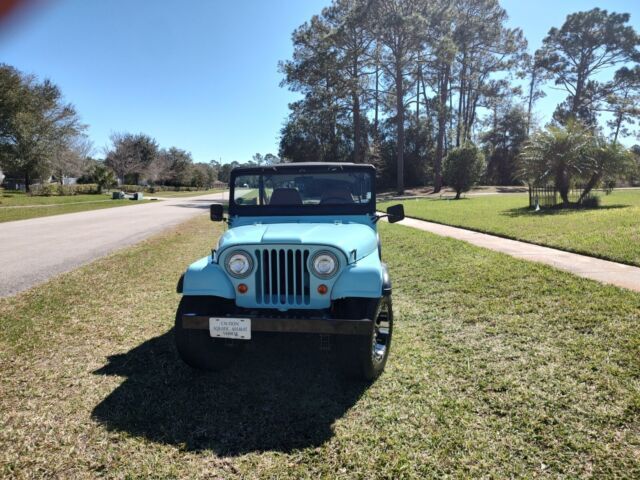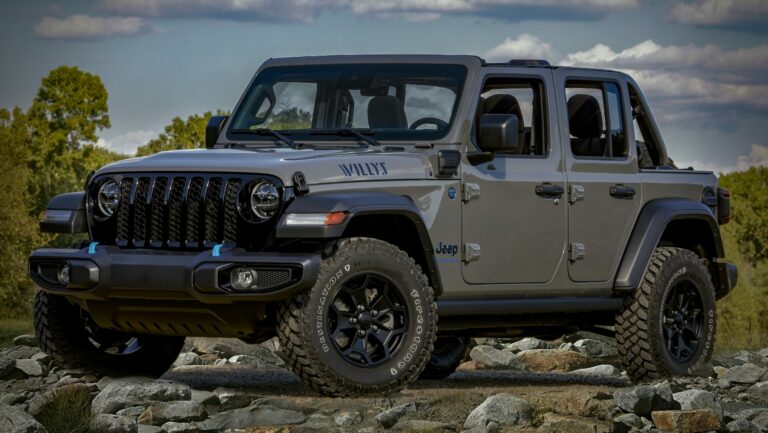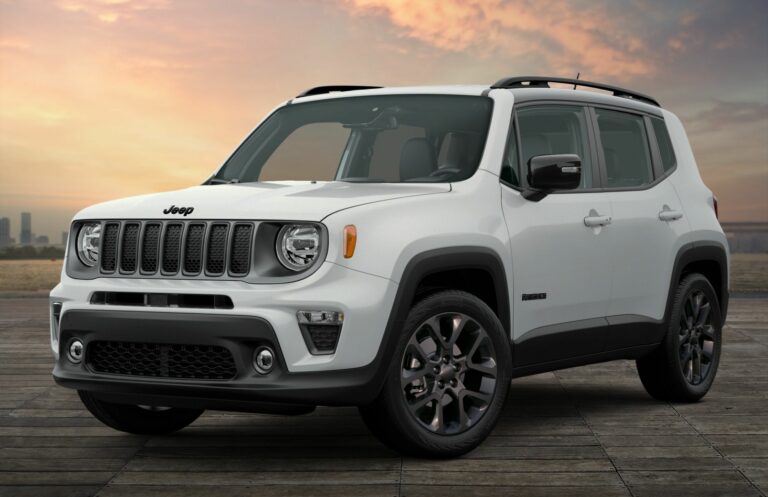1964 Jeep CJ5 For Sale: A Comprehensive Buyer’s Guide
1964 Jeep CJ5 For Sale: A Comprehensive Buyer’s Guide jeeps.truckstrend.com
For enthusiasts of classic American utility and rugged off-road capability, the mention of a "1964 Jeep CJ5 For Sale" immediately conjures images of adventure, heritage, and timeless design. More than just a vehicle, the 1964 Jeep CJ5 represents a pivotal moment in automotive history, embodying the spirit of post-war ingenuity adapted for civilian life. It’s a machine built for purpose, unburdened by modern complexities, offering a raw, unfiltered driving experience that is increasingly rare today. This comprehensive guide aims to arm prospective buyers with the knowledge necessary to navigate the exciting, yet sometimes challenging, journey of acquiring one of these iconic vehicles.
The Enduring Appeal of the 1964 Jeep CJ5
1964 Jeep CJ5 For Sale: A Comprehensive Buyer’s Guide
The Jeep CJ (Civilian Jeep) series traces its lineage directly back to the legendary Willys MB, the workhorse of World War II. After the war, Willys-Overland capitalized on the Jeep’s immense popularity by offering civilian versions, leading to the CJ line. The CJ5, introduced in 1955, marked a significant evolution, featuring a slightly longer wheelbase and a more refined design compared to its predecessors, while retaining the core values of durability and versatility.
The 1964 model year holds a special place within the CJ5’s long production run (which lasted until 1983). It largely retained the classic Willys-era characteristics before significant changes began to roll out later in the decade, such as the introduction of Buick V6 engines. The standard powerplant for the ’64 CJ5 was the venerable Willys "Hurricane" F-head 134 cubic inch (2.2 L) inline-four engine, paired with a Warner T-90 three-speed manual transmission and a robust Dana 18 transfer case, offering reliable 4×4 capability. Its compact 81-inch wheelbase, solid axles (Dana 27 front, Dana 44 rear), and leaf spring suspension contributed to its legendary off-road prowess. Owning a 1964 CJ5 isn’t just about owning a vehicle; it’s about preserving a piece of American industrial history and connecting with a legacy of exploration and utility. Its simple, utilitarian design, combined with its robust mechanicals, makes it a highly sought-after classic for collectors, off-road enthusiasts, and anyone seeking a genuine, no-frills driving experience.
What to Look For When Buying a 1964 Jeep CJ5
Acquiring a vintage vehicle like a 1964 CJ5 requires a keen eye and a thorough inspection. These vehicles are over 50 years old, and their condition can vary wildly from perfectly restored museum pieces to rust-ridden project cars.
Condition Categories:
- Restored/Show Quality: These CJs have undergone extensive, often professional, restoration. They feature immaculate paint, rebuilt mechanicals, and pristine interiors. They command the highest prices and are often ready for show or light cruising.
- Driver Quality: These vehicles are in good, functional condition. They may have minor cosmetic imperfections or signs of age, but they are mechanically sound and can be driven reliably. They offer a balance between authenticity and usability.
- Project Vehicle: These CJs require significant work, ranging from mechanical overhauls to extensive rust repair and bodywork. They are the most affordable but demand a substantial investment of time, money, or both.
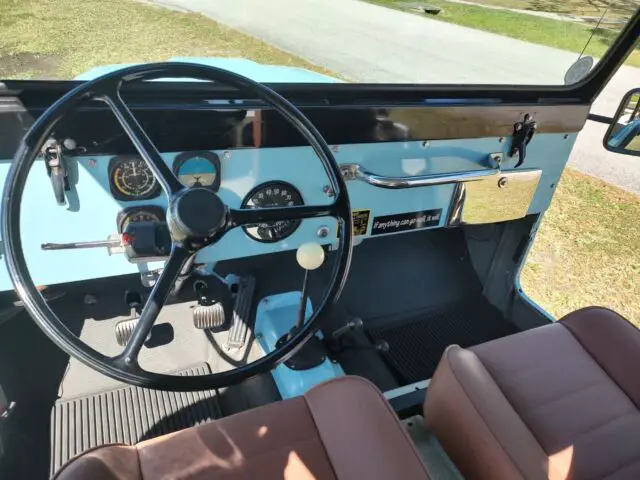
Key Inspection Points:
- Frame and Body Rust: This is paramount. The CJ5’s open-channel frame and steel body are highly susceptible to rust, especially in areas exposed to moisture and salt. Pay close attention to:
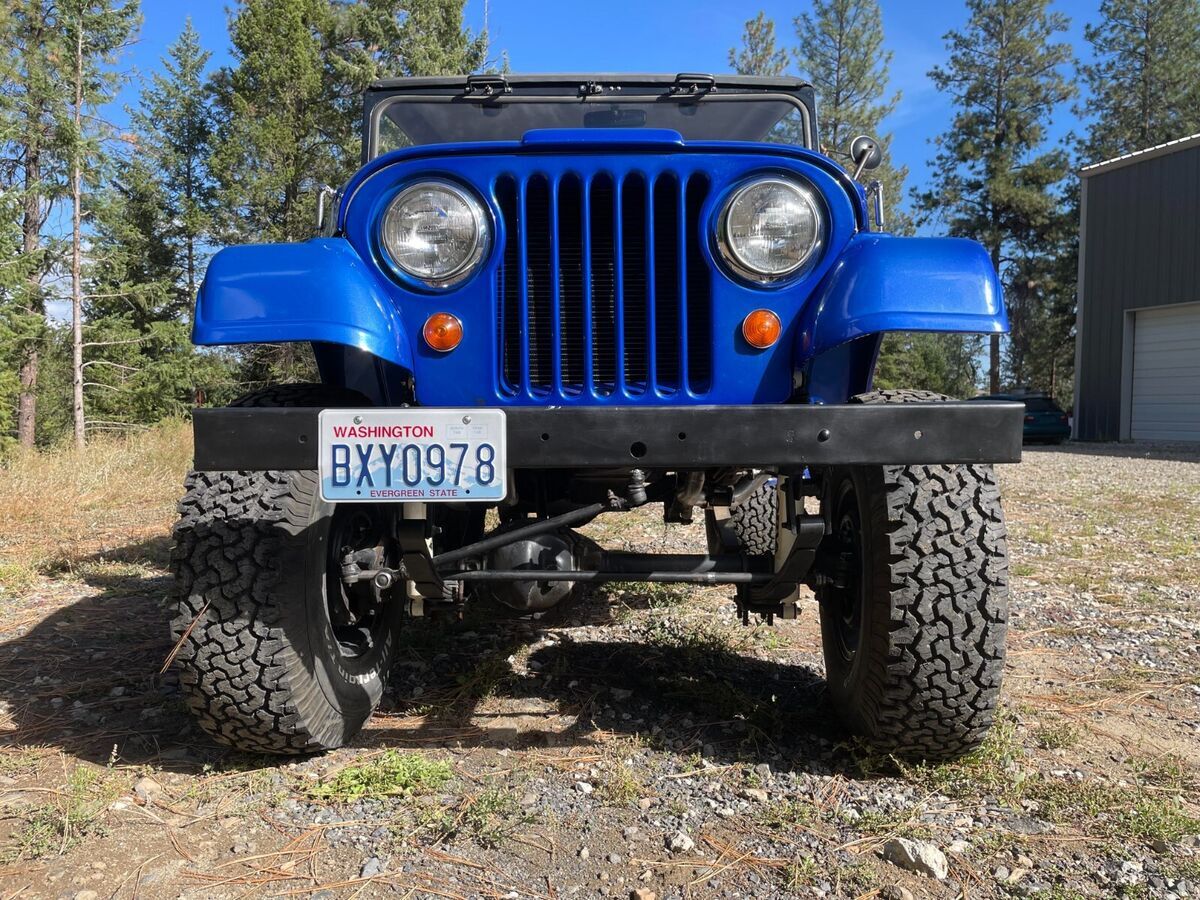
- Frame Rails: Look for pitting, flaking, or previous repairs (welds).
- Floorboards and Hat Channels: These are common rust-through areas, particularly under the pedals and seats.
- Fenders, Rocker Panels, and Tailgate: Check for bubbling paint or perforations.
- Under the Battery Tray: Acid leaks often cause severe rust here.

- Engine: The original Hurricane F-head 4-cylinder is durable but can show its age.
- Oil Leaks: Common around valve covers, oil pan, and rear main seal.
- Smoke: Blue smoke indicates oil burning, black smoke rich fuel mixture, white smoke coolant.
- Knocking or Tapping: Could indicate internal wear.
- Engine Swaps: Many CJs have had engine swaps (e.g., Buick Dauntless V6, Ford 302, Chevy 350). While these can offer more power, ensure the swap was done professionally and all systems (cooling, electrical) are compatible.
- Transmission and Transfer Case: The T-90 3-speed manual and Dana 18 transfer case are robust.
- Shifting: Test all gears, including reverse, for smooth engagement. Listen for grinding.
- Leaks: Check for fluid leaks from seals and gaskets.
- 4×4 Engagement: Engage 4-wheel drive (high and low range) and ensure it engages smoothly without binding.
- Axles: Dana 27 front and Dana 44 rear.
- Leaks: Check differential covers and axle seals.
- Noise: Listen for hums, whines, or clunks, which could indicate worn gears or bearings.
- Suspension: Leaf springs are simple but can sag or break over time.
- Bushings: Check for dry-rotted or missing bushings.
- Shocks: Look for leaks or excessive bounce.
- Brakes: The ’64 CJ5 uses drum brakes on all four corners.
- Functionality: Test for firm pedal feel and effective stopping.
- Leaks: Inspect master cylinder, wheel cylinders, and brake lines.
- Electrical System: Simple but can suffer from deteriorated wiring.
- Lights and Gauges: Test all lights, turn signals, and dashboard gauges.
- Wiring: Look for brittle, cracked, or frayed wires.
- Interior: Focus on the condition of the seats, dashboard, and floor. Originality can add value.
- Documentation: A clear title is essential. Any service records or previous restoration documentation add significant value and insight into the vehicle’s history.
Where to Find a 1964 Jeep CJ5 For Sale
Finding the right 1964 CJ5 requires patience and knowing where to look.
- Online Marketplaces:
- Specialized Classic Car Sites: Bring a Trailer, Hemmings, ClassicCars.com, eBay Motors often feature a wide range of classics, from project vehicles to fully restored examples.
- General Classifieds: Craigslist, Facebook Marketplace can sometimes yield local gems, though require more caution due to varying seller trustworthiness.
- Specialized Jeep Forums and Classifieds: Websites dedicated to vintage Jeeps (e.g., The CJ2A Page forums, EarlyCJ5.com) have active classified sections where enthusiasts buy and sell.
- Classic Car Dealerships and Auctions: Reputable classic car dealers often have a curated selection and can offer more transparency and potentially warranties. Auctions (e.g., Mecum, Barrett-Jackson) can be exciting but require quick decision-making and often have buyer’s premiums.
- Local Car Shows and Swap Meets: Networking at these events can lead to private sellers or information about available vehicles not advertised online.
- Word of Mouth/Jeep Clubs: Joining local or national Jeep clubs can open doors to a community of owners who might know of a CJ5 for sale or be willing to part with their own.
Restoration vs. Preservation: Understanding Your Purchase
When considering a 1964 CJ5, you’ll likely encounter vehicles in various states of repair, prompting a decision between a fully restored model or a project.
- Buying a Restored CJ5:
- Pros: Ready to drive, minimal immediate work, professional finish, often comes with documentation of restoration.
- Cons: Higher initial cost, less opportunity to personalize the restoration process, some "restorations" might hide underlying issues if not done properly.
- Buying a Project CJ5:
- Pros: Lower initial cost, allows for full customization to your preferences, deep satisfaction from hands-on work, intimate knowledge of the vehicle’s mechanics.
- Cons: Significant time and financial investment, can be overwhelming for beginners, requires mechanical aptitude or funds for professional help.
Parts availability for CJ5s, especially the earlier models, is surprisingly good. The widespread popularity and long production run mean that many mechanical and body parts are reproduced or available from specialized vendors. However, finding original, date-correct components for a concours-level restoration can be challenging and expensive. Budgeting for unexpected repairs or restoration costs is crucial, regardless of the initial condition.
Owning and Driving a Classic 1964 CJ5
Owning a 1964 Jeep CJ5 is an experience unlike driving a modern vehicle.
- The Driving Experience: It’s raw, mechanical, and engaging. No power steering, no power brakes, minimal sound deadening. You feel the road, hear the engine, and participate actively in the driving process. It’s not a highway cruiser, but rather excels at lower speeds, off-road, or on back country roads.
- Maintenance Considerations: Simplicity is key. The mechanical components are straightforward, making them relatively easy to work on for a home mechanic. Regular fluid checks, lubrication of moving parts, and attention to rust prevention are vital. Join a community of fellow CJ owners; their collective knowledge is invaluable.
- Insurance: Consider classic car insurance, which typically offers lower premiums and agreed-upon value coverage, acknowledging the vehicle’s collectible status rather than depreciating it like a modern car.
- Community Involvement: The vintage Jeep community is vibrant and welcoming. Joining clubs, attending shows, and participating in trail rides enhances the ownership experience significantly.
- Value Appreciation: Well-maintained or professionally restored 1964 CJ5s have shown a steady appreciation in value, making them not just a hobby but potentially a sound investment.
1964 Jeep CJ5 For Sale: Price Guide
The price of a 1964 Jeep CJ5 can vary significantly based on its condition, originality, and any modifications. This table provides a general guideline:
| Condition Category | Description | Price Range (USD) | Notes |
|---|---|---|---|
| Project | Non-running, significant rust, major mechanical issues, incomplete. Requires full restoration. | $3,000 – $8,000 | Ideal for experienced restorers. Expect substantial investment in parts and labor. May be missing key components. |
| Fair/Running | Runs and drives, but has obvious cosmetic flaws, minor mechanical issues, and needs significant work to be a reliable driver. | $8,000 – $15,000 | Good starting point for a rolling restoration. Might need engine/transmission overhaul, rust repair. |
| Good Driver | Mechanically sound, presentable exterior with minor imperfections, interior functional. Can be driven regularly with minor upkeep. | $15,000 – $25,000 | A solid choice for enthusiasts who want to enjoy the vehicle immediately. May have some modifications (e.g., engine swap, lift kit). |
| Excellent Driver | Well-maintained, excellent mechanical condition, very good paint and interior, minimal rust. Near-show quality, but driven regularly. | $25,000 – $40,000 | Often includes recent major service or light restoration. Reliable for longer drives and light off-roading. |
| Show Quality/Restored | Professionally restored to original or better-than-original condition. Flawless paint, rebuilt mechanicals, immaculate interior. | $40,000 – $70,000+ | Suitable for concours events. Commands top dollar. Authenticity and quality of restoration significantly impact the final price. |
Note: These are estimated ranges and actual prices can vary based on market demand, location, specific features, and the seller’s urgency.
Frequently Asked Questions (FAQ)
Q: Is a 1964 Jeep CJ5 a good daily driver?
A: Generally, no. While it can be driven, the lack of modern amenities (power steering, power brakes, air conditioning), rudimentary suspension, and slow speeds make it less practical for daily commuting, especially on highways. It’s best suited as a weekend cruiser, off-road vehicle, or show car.
Q: What engine did the 1964 CJ5 originally come with?
A: The 1964 Jeep CJ5 typically came with the Willys "Hurricane" F-head 134 cubic inch (2.2 L) inline-four engine.
Q: Are parts hard to find for a 1964 CJ5?
A: Surprisingly, no. Due to the CJ5’s long production run and popularity, many reproduction parts (body panels, mechanical components, electrical parts) are readily available from specialized classic Jeep parts suppliers. Original specific parts might be harder to source, but general wear items are accessible.
Q: What kind of fuel economy can I expect from a 1964 CJ5?
A: Fuel economy is not a strong suit. Expect single-digit to low-teen miles per gallon (MPG), typically in the 10-15 MPG range, depending on engine condition, terrain, and driving style.
Q: Can I still take a 1964 CJ5 off-roading?
A: Absolutely! The CJ5 was built for off-roading. Its short wheelbase, robust 4×4 system, and solid axles make it highly capable. However, exercise caution due to its age. Inspect all components thoroughly before venturing off-road, and consider upgrades like better tires and suspension if you plan aggressive trails.
Q: What should I budget for annual maintenance on a 1964 CJ5?
A: This varies greatly depending on the vehicle’s initial condition. For a good driver, budget a few hundred dollars for routine maintenance (oil changes, grease, minor adjustments). For a project, the sky’s the limit. Always set aside an emergency fund for unexpected repairs.
Conclusion
The pursuit of a "1964 Jeep CJ5 For Sale" is more than a simple transaction; it’s an investment in a piece of automotive legend. This rugged, iconic vehicle offers an unparalleled connection to driving history, a testament to American engineering, and an open invitation to adventure. Whether you envision a meticulous restoration, a reliable weekend driver, or a challenging project, the 1964 CJ5 promises a deeply rewarding ownership experience. By understanding its unique characteristics, knowing what to look for, and leveraging the vibrant classic Jeep community, you can confidently embark on the journey of acquiring and cherishing this truly special vehicle. It’s not just a Jeep; it’s a lifestyle.

